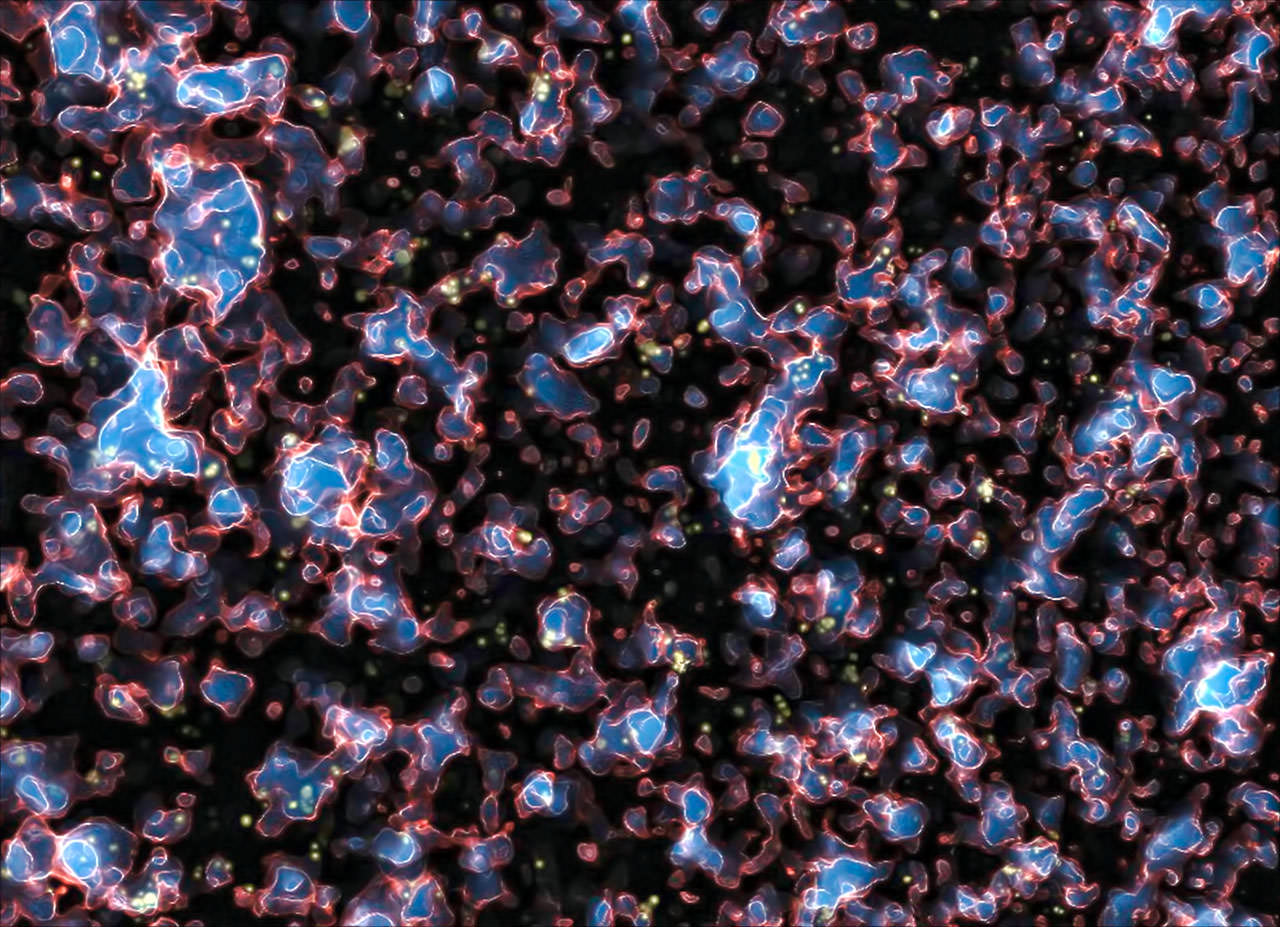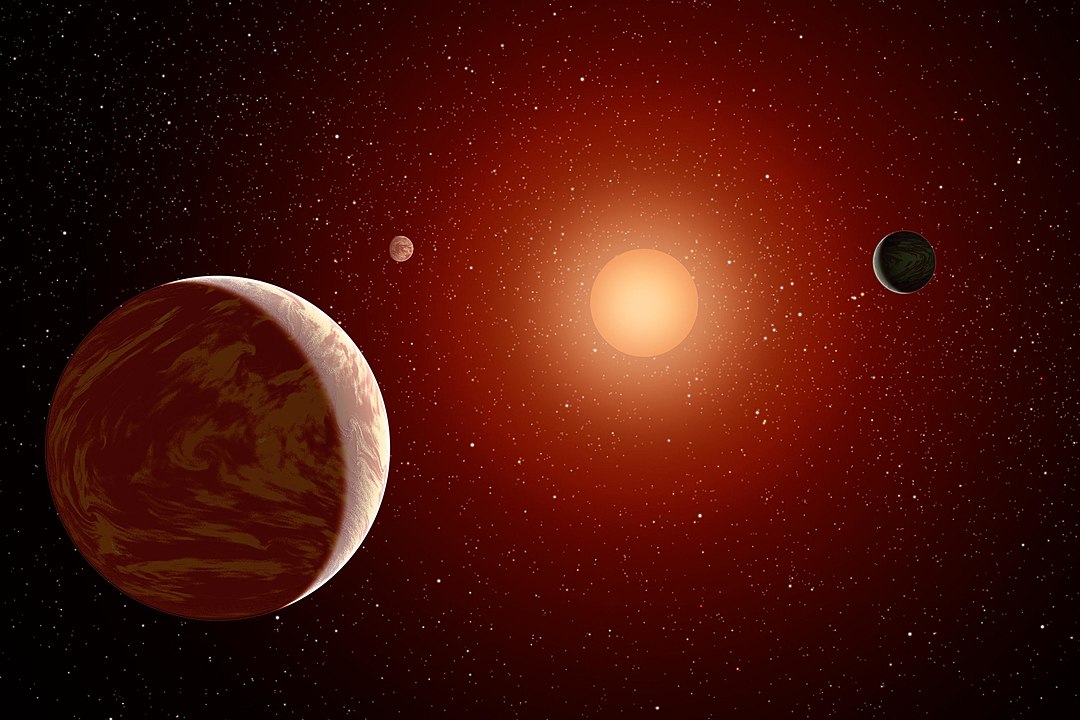The early Universe continues to offer surprises and the latest observations of infant galaxies are no exception. Astronomers found a surprisingly Milky Way-like galaxy that existed more than 13 billion years ago. That was a time when the Universe was really just an infant and galaxies should still be early in their formation. A well-formed one in such early history is a bit of a surprise.
The newly discovered galaxy is called REBELS-25. It was found as part of the “Reionization Era Bright Emission Line Survey (REBELS) survey using the Atacama Large Millimeter Array (ALMA) in Chile. The idea of the survey is to search out and measure early galaxies.
REBELS-24 is a massive disc-like galaxy with structures that look like spiral arms. That’s pretty similar to our Milky Way Galaxy. It’s more than 13 billion years old and took billions of years to evolve into its present shape. Like REBELS-25, the Milky Way began as a clumpy, disorganized proto-galaxy not long after the Universe began. It merged with other protogalaxies and evolved into a beautiful spiral shape. It appears to be actively forming stars and is incredibly massive for such a young galaxy.
Early Spirals Aren’t New
So, REBELS-25 raises a big question: why is it so massive and well-evolved at a time when the infant Milky Way was still a clump? That’s what astronomers are working to figure out. “According to our understanding of galaxy formation, we expect most early galaxies to be small and messy looking,” said Jacqueline Hodge, an astronomer at Leiden University, the Netherlands. The fact that REBELS-25 looks so “modern” after less than a billion years does—in a sense—rebel against the generally accepted theories about galaxy formation and evolution.
This isn’t the first time that astronomical observations uncovered early spirals. JWST observations suggest that perhaps a third of early galaxies are already spirals in the infant Universe. Its Cosmic Evolution Early Release Science Survey (CEERS) found many of these in the first 700 million years of cosmic history. So, finding this one looking almost “modern” some 13 billion years ago just adds to the mystery of their formation.
REBELS-25 showed up in ALMA observations, which also gave hints that it had a rotating disk. A set of follow-up observations confirmed the rotation of this galaxy and its spiral arm structures. In addition, the ALMA data found hints of a central bar (just like our Milky Way galaxy has). “ALMA is the only telescope in existence with the sensitivity and resolution to achieve this,” said Renske Smit, a researcher at Liverpool John Moores University in the UK and part of the team that worked on this discovery.

Surprisingly, the ALMA data also hinted at more developed features similar to those of the Milky Way. It looks like there’s a central elongated bar, and even spiral arms in REBELS0-25. “Seeing a galaxy with such similarities to our own Milky Way, that is strongly rotation-dominated, challenges our understanding of how quickly galaxies in the early Universe evolve into the orderly galaxies of today’s cosmos,” said Lucie Rowland, a doctoral student at Leiden University who led the research into REBELS-25. “Finding further evidence of more evolved structures would be an exciting discovery, as it would be the most distant galaxy with such structures observed to date.”
What Does This Mean for Galaxy Evolution?
As astronomers discover more of these well-evolved galaxies in the early Universe, they’ll have to adjust the working model of galactic birth and evolution. In that model, the baby galaxies are clumps of stars and gas that come together in collisions and cannibalism to form larger galaxies. It’s typically considered a messy and turbulent time in cosmic history. Infant galaxies collided and grew. They combined their stars and gases to make larger structures. Over time they begin to rotate, which also influences the formation of structures inside the galaxy. Further collisions add more mass to the galaxy, and they also spur bursts of star formation. All of this takes billions of years to accomplish. Or so astronomers always thought.
REBELS-25 and other early spirals challenge that general model. For one thing, REBELS-25 looks like a galaxy that’s evolving at an accelerated pace. Compared to the Milky Way’s ponderous billions of years of evolution, REBELS-25 is going at warp speed. That implies something is pushing that acceleration. T he big thing now will be to explain its advanced evolution at a very young age.
The REBELS program should help astronomers understand more about the processes at work only a few hundred million years after the Big Bang. That survey will supply large enough amounts of data about high-mass galaxies in the early Universe. Those samples should allow astronomers to do targeted studies of more galaxies using both ALMA and JWST. Both observatories are powerful enough to give detailed looks at individual galaxies in those very early epochs of cosmic history.
For More Information
Space Oddity: Most Distant Rotating Disc Galaxy Found (PR)
Space oddity: Most Distant Rotating Disc Galaxy Found (the paper)
About REBELS










